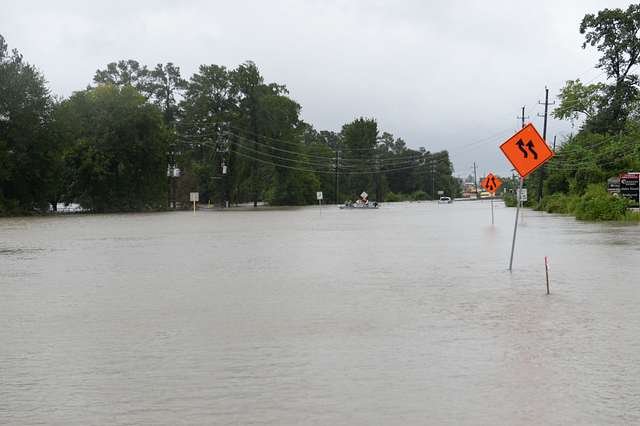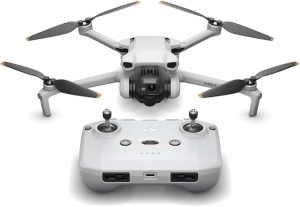Drones in Disaster: Why No-Fly Zones Matter During Texas Flood Rescue
When calamity strikes, swift decisions and actions are crucial. The catastrophic floods that devastated Texas in early July 2025 brought forth acts of heroism and sorrow, while also opening a new chapter for drones in emergency response. Despite their promise as tools for search and rescue, drones introduce fresh challenges, notably when crowded skies hinder professional operations just when they’re needed most.
The Lifesaving Role of Drones in Disaster Response
Consider being caught amid rising floods with no viable roads and disrupted communication lines. In these situations, drones become indispensable “eyes in the sky” for rescuers. In the Texas floods, emergency and military units utilized advanced UAVs outfitted with:
- Thermal imaging cameras: Crucial for identifying survivors and victims amid debris or unreachable areas.
- Real-time aerial mapping: Allowed teams to survey extensive areas of flood damage in minutes rather than hours.
- Guidance for rescue crews: Directed swiftwater rescue teams to those in need, coordinating efforts with search dogs and ground volunteers.
For instance, Heal-Corp, a search and rescue collaborative working with Texas authorities, deployed drones to assist canine teams identifying survivors among debris. Larry Mynar, president of Heal-Corp, noted: “When sensing a hotspot, we can direct teams there…and provide foresight, cutting down response time.”
The Problem: Personal Drones in Emergency Airspace
As the news spread, so did the inclination for enthusiasts and amateur reporters to launch their drones, seeking to capture dramatic footage or contribute to rescue efforts. Unfortunately, unauthorized flights can severely disrupt emergency operations.
What Can Go Wrong?
- Collision Risks: Unregulated drones pose significant threats to low-flying helicopters and rescue UAVs, with actual incidents halting critical operations.
- Operational Delays: Emergency teams must now also avoid unexpected drones, costing vital seconds that could mean the difference between life and death.
- Communication Breakdowns: Coordination is key, and rogue drones can redirect resources from vital rescue missions.
This issue extends beyond Texas, affecting wildfire and hurricane responses across the country.
Why No-Fly Zones Matter
As the Texas flood crisis unfolded, officials quickly established strict no-fly zones over the most affected areas, emphasizing that personal drones must remain grounded to allow professional rescue efforts to proceed safely.
Key Reasons for No-Fly Zones:
- Safety: Prevents mid-air collisions.
- Efficiency: Ensures professional teams operate at maximum effectiveness.
- Focus: Allows responders to concentrate on rescuing lives.
Violators of these regulations risk facing severe consequences, including fines and criminal charges.
How Professional Drones Saved Lives in the 2025 Texas Floods
The Texas floods serve as an example of both the potential and pitfalls of drone technology in disaster zones.
- Military drones provided real-time flood maps, aiding rescue teams in prioritizing efforts.
- Law enforcement UAVs captured crucial images, assisting in coordinating rescues.
- Volunteer drone groups like Heal-Corp, operated under supervision, significantly enhanced rescue capabilities.
Without these measures, many more individuals may have been lost or rescue times lengthened.
The Human Cost of Poor Drone Etiquette: A Real Case
In Kerr County, a privately operated drone collided with a rescue helicopter, causing significant delays and putting lives at risk. This incident serves as a stark reminder of the high human stakes involved.
Frequently Asked Questions (and What Every Drone Owner Needs to Know)
Q: I want to help during disasters with my drone. Can I?
A: Unless you are part of an official response team and have requisite permissions, unsupervised flights are not allowed.
Q: How do I know if there’s a no-fly zone?
A: Temporary Flight Restrictions (TFRs) are issued by the FAA, and tools like the B4UFLY and AirMap apps provide current information.
Q: What are the penalties for violating a no-fly order?
A: Penalties may include drone confiscation, fines, and legal action in cases of incident-causing flights.
Expert Tips: Responsible Drone Use in Crisis Situations
- Stay Informed: Check active TFRs before flying.
- Register Your Drone: FAA registration is necessary for most drones.
- Get Certified: Obtain your FAA Part 107 Remote Pilot Certificate for commercial or emergency drone work.
- Join Local Teams: Participate in training programs to safely contribute to crisis operations.
- Educate Others: Promote awareness of drone safety and no-fly rules during disasters.
The Future: Smarter Drone Regulation and Public Awareness
The Texas floods underscore the vast potential for drones and the need for progressive regulation and public education.
We may anticipate:
- Automated geofencing: Prevents drone takeoff in no-fly zones.
- Real-time airspace monitoring: Instantly alerts authorities and pilots of unauthorized activities.
- Volunteer Program Integration: Enhanced training and control could allow civilians more direct involvement in rescue operations.
Final Thoughts: Drones Bring Hope—But Only If We All Follow the Rules
In emergencies, drones are invaluable assets when used responsibly. The events in Texas illustrate how drones, operated with oversight and diligence, can locate survivors, guide responders, and offer reassurance. However, unauthorized drone activities can lead to tragic outcomes.
If you’re a hobbyist or a professional, remember: When disaster hits, keep your drone grounded unless summoned by the authorities. This is the most effective way to assist.
Let’s cultivate a culture of responsible flying so that every drone operates for the greater good during emergencies.













